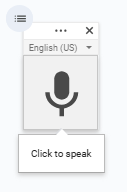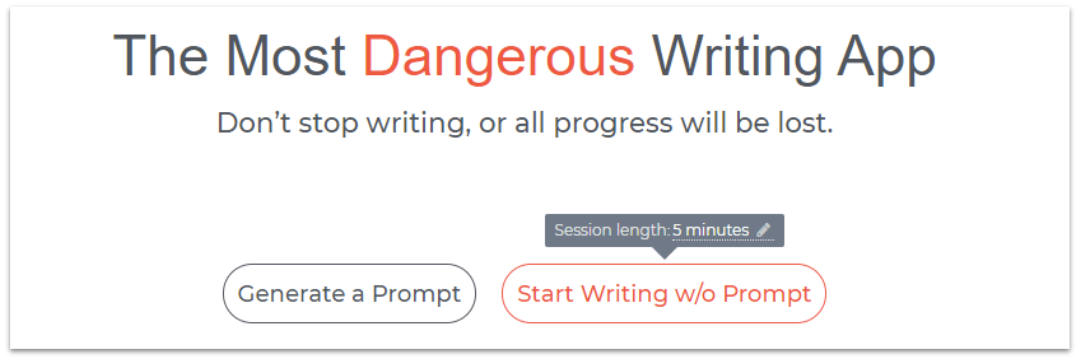Once you have defined your task in the pre-writing phase of the writing process and have a clear mission for your writing, the next step is to generate some preliminary ideas to inform your work. This might look different depending on your purpose.
If you’re engaging in creative writing, you may want to begin by brainstorming. Brainstorming is a great way to get initial ideas down on paper without evaluation. In fact, the key to quality brainstorming is to turn off your internal critic and let the unfiltered ideas spill out.
This can be challenging, but it’s a key component in tapping into your right-brain thinking, the creative half of your brain. If you can, banish those logical thoughts for a while as well as the inclination to self-critique. Let your imagination have fun making random, free associations. This is where the most original and creative ideas are born.
During this process, you may find that you come up with ideas that even surprise you. The brain is an amazing thing, and it can make unique connections, creating amazing new ideas.
While you can certainly use a pencil and paper to record your ideas, thoughtful use of technology can enhance the process.
Creative Writing
The following are three examples of how you might integrate technology to enhance creative writing.
- Voice-to-Text Technology
This option includes such tools as the Voice Typing feature in Google Docs. Although students typically type their ideas onto digital documents, this act of typing can sometimes be a hindrance to getting the ideas on paper quickly. After all, students may not be skilled typers yet.
That’s where the voice typing comes in. With this tool, students speak their ideas, and the voice typing application converts that speech into typed text on the document.
The speech-to-text process is almost always faster than typing, allowing students to generate more ideas in less time.

This website by Squibler inspires freewriting with a creative approach. Freewriting is similar to brainstorming. Rather than listing single words or bulleted ideas, freewriting usually involves a stream-of-consciousness writing experience that results in complete sentences or at least longer phrases with more complete thoughts.
The Most Dangerous Writing App offers an online writing space with a built-in timer. On the surface, this doesn’t seem very unique. However, there’s a catch. You must keep writing continuously. If you stop, everything you’ve written will disappear.
The intent is to get you writing quickly, without pausing, and generating as many ideas as possible in a short amount of time. The threat of losing your writing is intended to keep you in the habit of putting down words, even if that means typing the same word over and over until you get a new idea and continue writing. By writing so quickly, your brain has less time to be critical of your ideas, prompting more creative responses.
You can set the timer and choose to either receive a random AI-generated prompt or start writing on a topic of your choice. For even more fun, choose Hardcore Mode, which blurs yours writing until you’re finished, eliminating the temptation of reading what you’ve written before the freewriting experience has ended.

- Generative AI Chatbots
This includes a variety of options, such as ChatGPT, Gemini, CoPilot, and Claude. When using these tools, it’s important that the AI doesn’t do the actual writing for your students. Still, it can be a great tool for working through writer’s block and brainstorming new options.
One approach is to have students paste what they’ve already written into the chatbot. With this approach, your students are starting with their own original work. They can then ask the chatbot questions about those ideas to help take the work to the next level. Here are a few examples of questions that students might ask:
-
- What am I missing?
- What might I want to consider next?
- Based on this beginning of a story, what are some possible ways that I might consider developing it further?
- What are some possible conflicts that I haven’t thought about?
- What questions do I need to answer to make this content stronger?
Essentially, the chatbot becomes a brainstorm partner and a way to help process ideas. Of course, it’s also valuable to ask these types of questions in live collaborative groups or with a partner in class, but chatbots can have a meaningful place in the process.

Expository Writing
If your writing goal is expository in nature, rather than creative, you’ll likely want students to do a little preliminary research to give them context with their brainstorming and the writing process. After all, it’s hard to brainstorm or write out ideas if you don’t know anything about a topic.
Here are a few tools and strategies that you can use for this type of preliminary research.
- Conduct a general web search.
Use Google or another web browser and search for your topic. The key is to keep it broad.
When you begin, start with just your general topic. Then, scan the results for keywords and general ideas that seem to come up repeatedly. These are likely subtopics that deserve further exploration. If you see terms or names that you don’t recognize, you’ll probably want to dig into those and find out more about each term or concept.
You may also run across related topics that you hadn’t initially considered. These topics might lead you in a new direction or to refining your topic.
Be on the lookout for synonyms as well. Ask yourself, “Are there other terms used to describe my topic?” If there are, you might consider doing another general search using one of those synonyms. As you learn more, you may even discover that you were not initially using the best keyword and that the new term provides you with more relevant results. This progression is an important part of the research and writing process.
- Search an encyclopedia.
While encyclopedias are not intended for serious research, they are excellent tools for providing general information and a good starting point. Since you’re just collecting ideas at this point in the pre-writing process, free online encyclopedias—like Britannica or Britannica Kids for younger students—or even a crowdsourced Wikipedia can be effective options.
As you look through an encyclopedia entry for your general topic, look for clues and ask questions like:
-
- What are the key aspects of your topic?
- What are experts in the field debating?
- Is there key vocabulary that you need to know?
- What should you explore next to answer these questions?
In addition to asking these types of questions, look for the following features that are included in most online encyclopedias:
-
- Outlines: Does the encyclopedia break down the topic into outline format? This can be very helpful in identifying key aspects of a larger topic.
- Headings: Scan the headings to see how the topic has been broken down.
- Bold or hyperlinked words: Encyclopedias often bold or hyperlink keywords in the text. If they’re called out, they’re probably important, so take note of these. It can be especially helpful to find names of people, places, events, and studies.
- Bibliographies or references: Many times, you’ll find extensive resources or source material at the bottom of encyclopedia entries. Follow up on these to dig deeper into the topic. Hyperlinks often make it quick and easy to jump to these other resources.
- “See also” references: Encyclopedias may also include “see also” lists that can guide you to related subjects and better inform your quest for information. This is another way to find synonyms for your main topic.
- Search research databases.
While databases will often be the source of more specific research later on in the process, they can also help provide context and an overview at this stage. By conducting a general search, you’ll often find many of the same features available in encyclopedias: content outlines, keywords, and “see also” references. Check with your local library media specialist to find out what databases you can access.
- Engage with generative AI chatbots.
Generative AI chatbots should probably not be students’ only tool for generating preliminary ideas since AI can hallucinate and make up information. However, chatbots are very intuitive to interact with, and they can be helpful in spurring new thoughts. There are a few ways that you might consider having students use chatbots.
One would be to help break down a larger topic into smaller parts. To do this, students might enter a prompt, such as “You’re writing a research essay, and your topic is _____. How would you break this topic down into subparts? What topics are related to this general subject that might be relevant in this paper?” Alternatively, they might ask, “Before I begin to write my paper, what related topics should I research to gain a better understanding of my general topic on _____?”
You can also encourage students to engage in a conversation about their topic with the chatbot. Students might enter a prompt, such as “I’m considering writing a paper about _____. What should I know about this topic before I begin writing?” They also might enter something like, “I understand this aspect of my topic, but I’m confused about this. Could you explain it to me?”
Students can also cue the chatbot to be the writer and enter: “You are writing a paper about _____. What questions would you want answered before beginning to write about this?” The chatbot may ask follow-up questions, and students should be encouraged to engage in the back-and-forth conversation.
Chatbots are best used in conjunction with the other pre-writing strategies, rather than as the only pre-writing tool. When using chatbots, encourage students to look for any inconsistencies between ideas that the chatbot generated versus results from their other research. They should fact-check any differences.
In general, when students are using any of these pre-writing strategies, they’re not yet looking for specific evidence or supporting content. They’re still in the idea gathering stage, and they’re looking to gain a better general understanding of the topic, which will then allow them to write more thoughtfully as well as discover subtopics and key ideas that they will need to explore further.
Students should keep track of the keywords and preliminary ideas that they generate. They’ll reference these notes in future stages of the writing process.
By the end of this pre-writing step, students should have generated enough focus to be able to identify the general idea of their creative writing or the thesis for their expository work. This clear focus will be essential in guiding them through the next steps.
Although this might seem like an overly involved process to go through before students ever begin writing, doing a thorough job at this phase of the process will set them up for much greater success as they progress through the writing process.
AVID Connections
This resource connects with the following components of the AVID College and Career Readiness Framework:
- Instruction
- Rigorous Academic Preparedness
- Student Agency
- Insist on Rigor
Extend Your Learning
- Type and Edit With Your Voice (Google)
- The Most Dangerous Writing App (Squibler)
- ChatGPT (OpenAI)
- Gemini (Google)
- Copilot (Microsoft)
- Claude (Anthropic)
- Britannica (Encyclopædia Britannica, Inc.)
- Britannica Kids (Encyclopædia Britannica, Inc.)
- Wikipedia (Wikimedia Foundation, Inc.)
